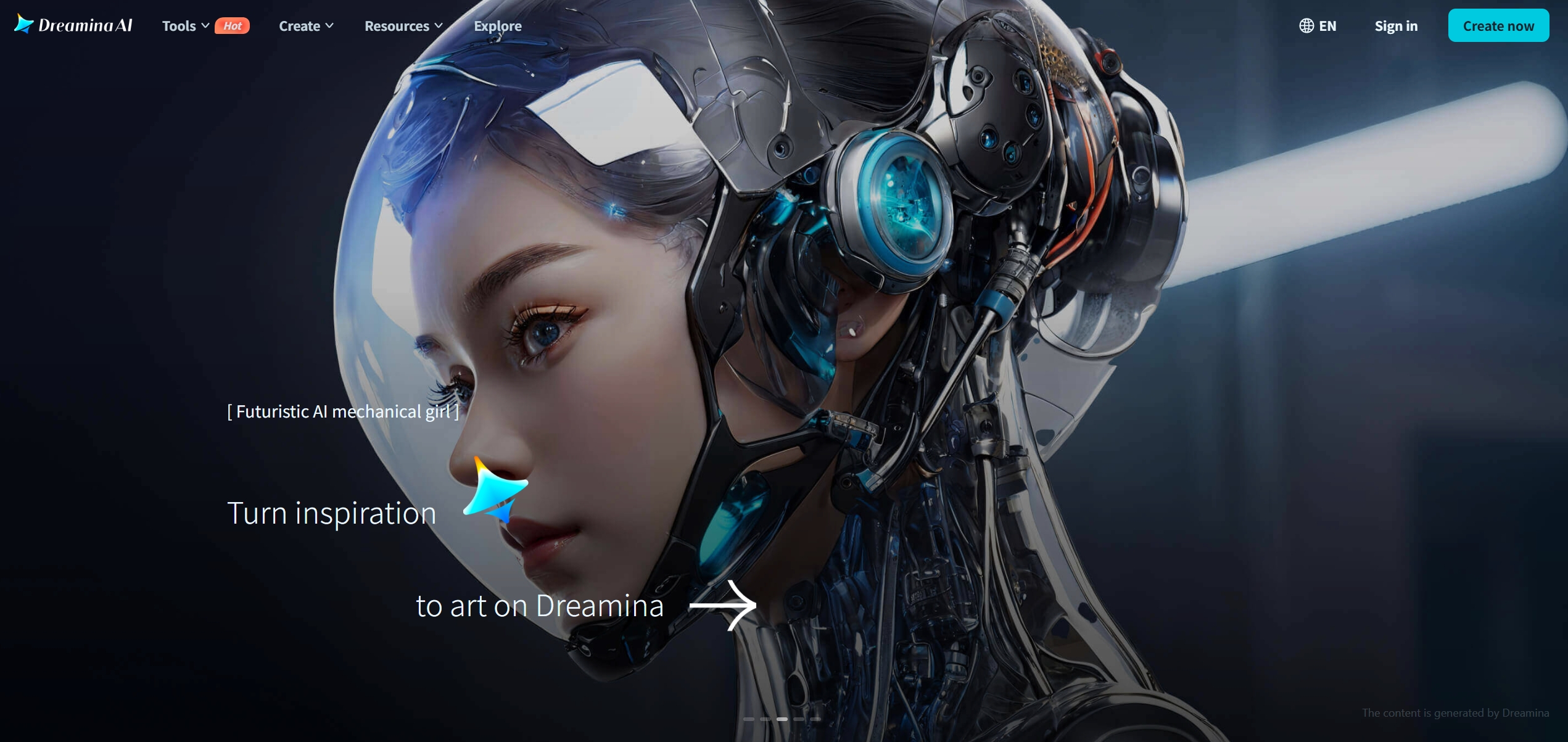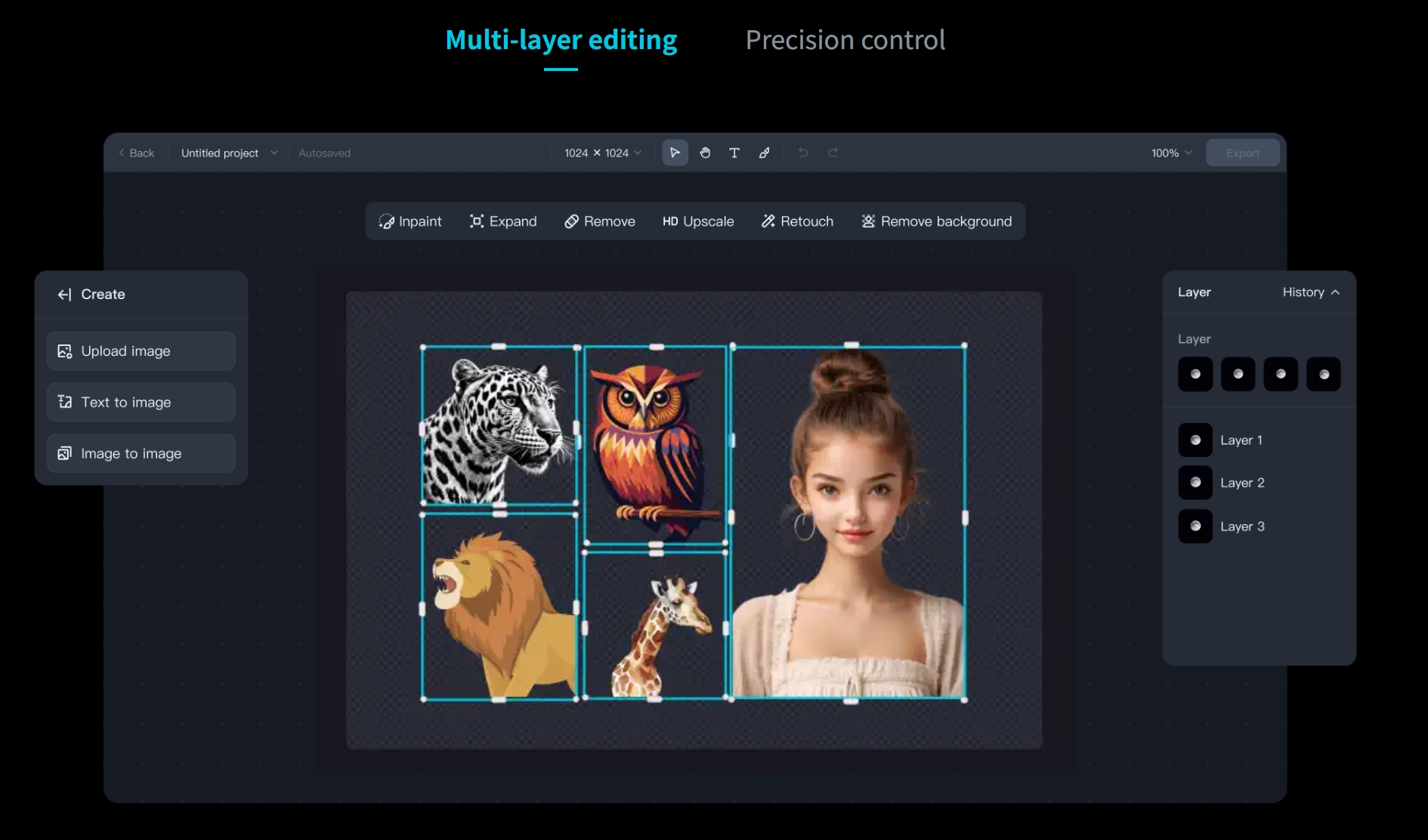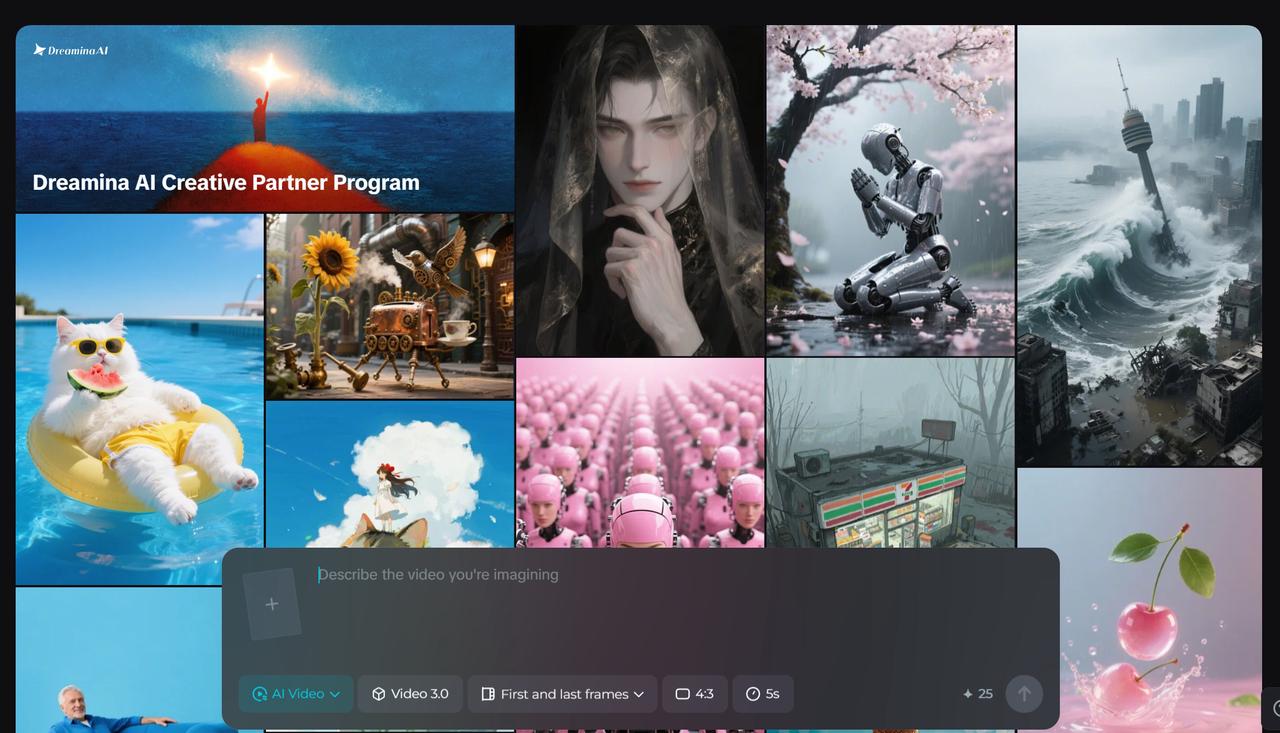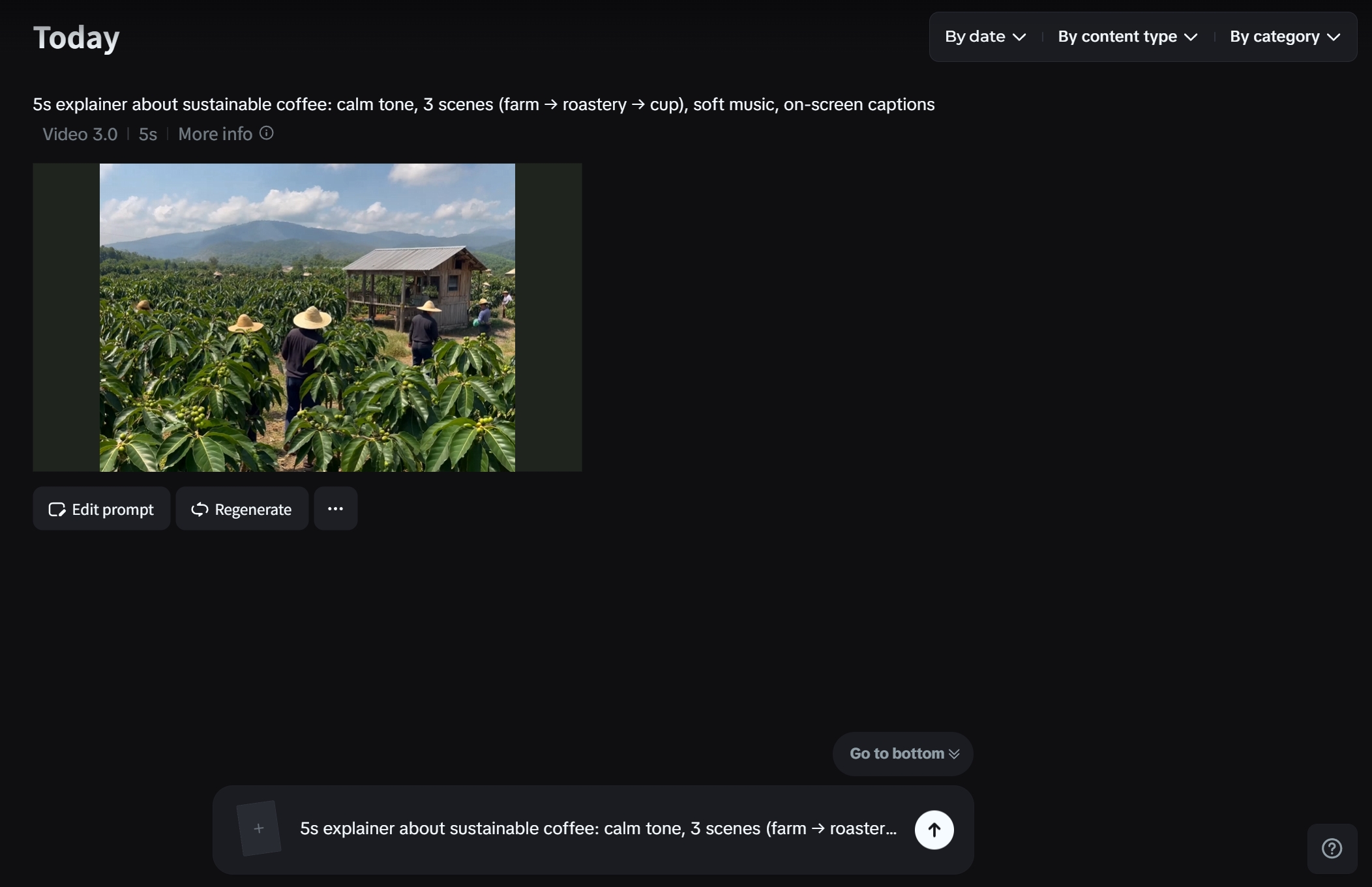Dreamina AI Review: When Generative AI Meets Real Creative Workflows

Creators want fast video concepts without losing the soul of an idea — the kind of speedy drafts that let you try three directions before breakfast. Enter Dreamina: an all-in-one AI creative suite living on the CapCut/Bytedance family of sites that promises text→image→video convenience inside a friendly web UI. In this review I’ll walk through first impressions, show real hands-on tests with exact prompts, explain how Dreamina can fit into a real pipeline, and give a clear verdict on who should use it (and when to pass).
Quick verdict
Short verdict: Useful, fast, and friendly for social-first concepting — but don’t expect pixel-perfect brand mastery straight out of the generator.
Snapshot:
- Best for: rapid prototyping for social, moodboards, short promos.
- Major strength: template-driven speed + simple prompts → usable drafts.
- One caveat: generative visuals can lack the nuance required for final brand assets.
What is Dreamina AI

Dreamina bills itself as an all-in-one AI creative suite: image generation (text→image & image→image), avatar tools, and video generation — all accessible from the Dreamina/CapCut web front end. The core loop is straightforward: write a prompt, get a draft (image or short video), tweak with templates or canvas tools, then export. It’s positioned toward social creators, marketers, and small studios who need to iterate quickly rather than craft cinematic VFX. The site emphasizes starter templates and canvas editing tools to help non-technical creators get to a presentable result fast.
First impressions & onboarding
- Signup & UI: Signing in (or trying a demo) is quick and the UI is clean — bright cards for templates, clear calls of "AI image, AI video, AI avatar, Mimic Motion" and an obvious prompt box. Starter templates and categories (e.g., marketing, avatars, posters) are front-and-center, which helps you skip the blank-canvas dread.
- Learning curve: Low for basic use: short prompts produce usable outputs immediately. Getting fine-grained control (exact timing, color grading, brand fidelity) requires more experimentation or finishing in an NLE.
- First render experience: You can typically get a first draft in a few minutes; the interface nudges you toward templates, canvas editing (inpaint/expand/remove), and image-to-image tweaks, so first renders feel approachable rather than technical.

Key features & how they work
Below are the main features I tried and how they behave in a real workflow.
- AI image/video — Prompts are parsed into scene segments and a basic pacing structure. Dreamina leans into short, social-friendly formats (e.g., 9:16 reels) and produces quick storyboards that you can refine. Why it matters: speeds concept-to-rough-cut.
- Templates & presets — Ready-made templates for promos, intros, and social shorts. They’re helpful scaffolds — swap copy, adjust timing, and the template preserves the general rhythm. Why it matters: gets a presentable draft quickly for client review.
- Editing & refinement — Simple timeline edits, replaceable assets, and shot-level adjustments. Not a full NLE but enough to tighten cuts and swap text/audio. Why it matters: most ideation wounds are fixed here before sending to an editor.
- Asset library & AI suggestions — Built-in stock clips, music suggestions, and suggested framings/shot lists help fill gaps. The system suggests image styles or moods based on prompts. Why it matters: cuts the time spent hunting for filler content.
- Collaboration & versioning — Basic project sharing, comments, and iteration history exist in the team workflow (helpful for quick client rounds). Why it matters: reduces screenshot-and-email back-and-forth.

Mini comparison table — feature → real-world value
| Feature | Real-world benefit |
|---|---|
| Templates (reels/ads) | Very fast draft-ready assets for social |
| Canvas editing (inpaint/expand) | Quick creative fixes without leaving the browser |
| Export / CapCut tie-in | Easy handoff to full edits or mobile workflows |
Workflow integration: where Dreamina sits in a real pipeline
Think of Dreamina as the idea-to-rough-cut node. Workflow example: concept → Dreamina draft → CapCut/NLE for finishing → publish. It’s perfect for rapid prototyping, social ads, moodboards, and creating rough cuts for client signoff. Limitations show up when you need broadcast masters, complex VFX, or precise color grading — those should move to a traditional editor after Dreamina gives you a head start.
What I actually tried
I ran three short tests to see how Dreamina performs in practical scenarios. Below are the exact prompts I used and what happened.
Test A — 4-second social promo
Prompt used:
“Create a 4s upbeat promo for a fitness app: energetic cuts, voiceover line ‘Get stronger every day’, fast tempo, vertical 9:16.” What I expected: a high-energy sequence with quick cuts, on-screen captions, and an upbeat track. What I did / results: I got a fast draft that matched mood and pacing. The cuts were energetic and the rough VO placement worked, though lip sync and exact phrasing needed manual VO import for polish. Render time: a few minutes for the first pass; one quick tweak and a re-render added ~3–5 minutes. Verdict: Great for social promo concepting — usable as a draft for paid-testing creative.
Test B — 5-second explainer with subtitles
Prompt used:
“5s explainer about sustainable coffee: calm tone, 3 scenes (farm → roastery → cup), soft music, on-screen captions.”
What I expected: clear scene progression, readable captions, friendly b-roll. What happened: Dreamina created nicely themed visuals for the three scenes and auto-generated captions. Timing for captions occasionally drifted relative to the visuals (some lines were slightly early/late), and some generative footage felt stylistically generic instead of documentary-accurate. Fixes: trimming captions in the timeline and swapping one shot with an imported clip. Render time: ~3-4 minutes including small edits. Verdict: Solid explainer skeleton; fact-heavy or brand-accurate visuals still need a human touch.
Test C — Brand template + custom assets
Prompt used:
“Use brand palette (#0D3B66 #FAF0CA #F4D35E), logo on lower right, 15s bumper.” What I expected: color-matched graphics and logo placement. What happened: Dreamina accepted hex codes and applied a palette to titles and background elements. Uploading the logo and pinning it to the corner was straightforward; however, exact color fidelity and logo sharpness needed a re-import at higher resolution. Trimming and timing were easy in the template.
Verdict: Handles brand basics well — great for quick bumpers and social intros, but final logo/vector polish belongs in proper design software.
For each test I noted: iterations were fast (minutes), generated footage is realistic enough for client review but not final delivery, audio handling is adequate for drafts (voiceover auto-place helps), and final finishing still benefits from an NLE.
Pros & Cons
Pros
- Rapid ideation and concept-to-video speed.
- Template-driven workflows that target social formats.
- Friendly UI that helps non-technical creators get usable drafts.
Cons
- Generative visuals sometimes lack nuance for strict brand specifications.
- Tight control over timing and color usually requires finishing in a traditional editor.
- Export/format limits may appear on lower tiers (advanced codecs or long-form exports).
Who should use Dreamina
- Social media managers who need 5–10 quick concepts for A/B testing.
- Indie creators and educators making explainer content or promos.
- Small agencies and marketing teams prototyping moodboards and rough cuts.
Tips, tricks & best practices
- Write scene-by-scene prompts: short, explicit lines for each scene (mood, pacing, any lines of VO). This helps Dreamina generate coherent cuts.
- Use templates as scaffolds, then refine shot-by-shot: swap one or two clips rather than rebuilding everything.
- Export at highest quality, then finish in an NLE: Dreamina gets you 80% there — NLEs give you the final 20%.
- Keep a brand library: upload your logo, hex palette, and a style spec to speed brand-consistent iterations.
- Prompt tip: include tempo words (“fast tempo”, “slow dissolve”), aspect ratio (“vertical 9:16”), and exact lines you want on screen.

Conclusion & final verdict
Dreamina is an excellent ideation companion: it turns short prompts into polished drafts quickly, and the template-led approach is ideal for social-first workflows. If you need to iterate and test creative directions fast, Dreamina will save hours. If you need final, broadcast-quality deliverables, treat Dreamina as a powerful concepting tool and finish the deliverable in a dedicated editor. Final verdict: Try Dreamina today if you want fast, usable drafts for social and client rounds — but plan on an NLE for final polish.

공유하기

